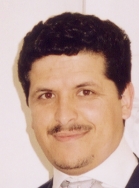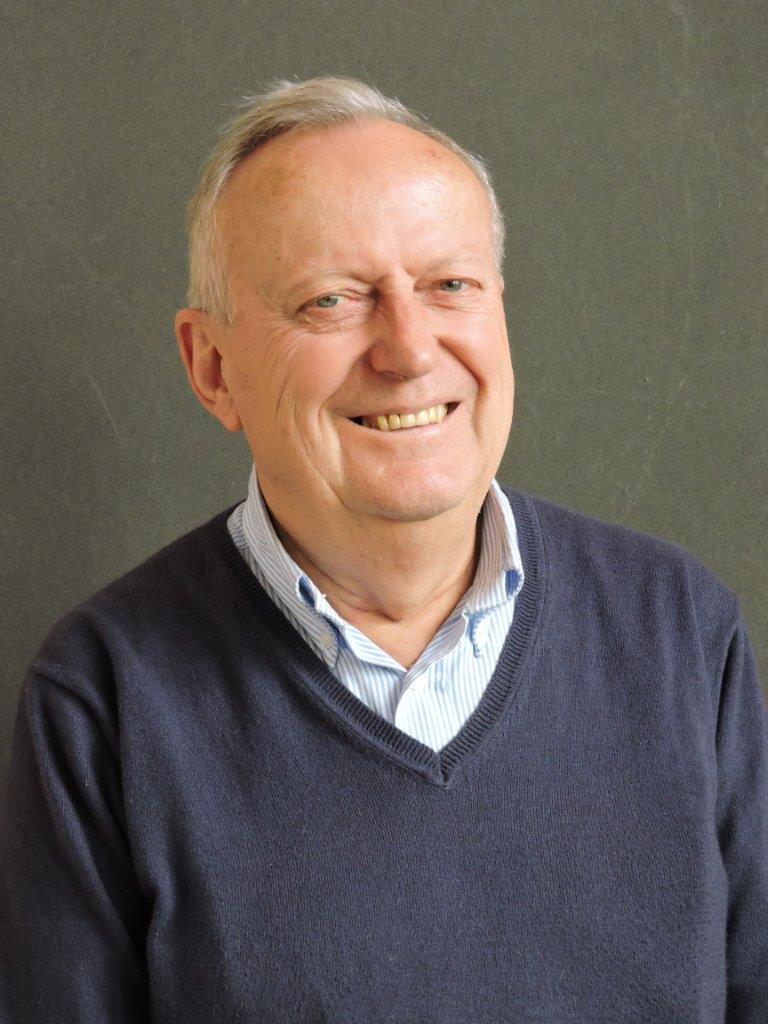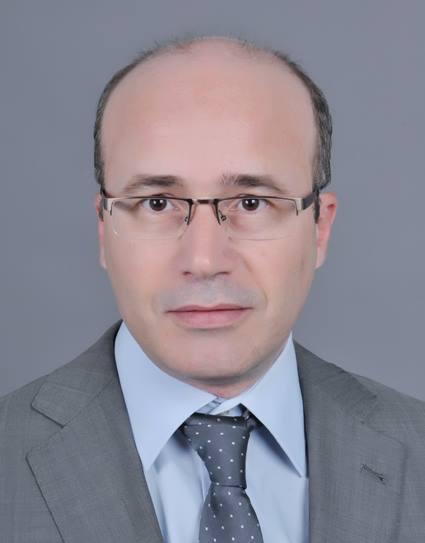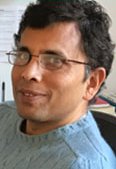KEYNOTE SPEAKERS

|
Habib ZAIDI
PINLAB, Geneva,
|
Title:Promising applications of deep learning in medical image analysisAbstract:Quantitative image analysis has deep roots in the usage of positron emission tomography (PET) in clinical and research settings to address a wide variety of diseases. It has been extensively employed to assess molecular and physiological biomarkers in vivo in healthy and disease states, in oncology, cardiology, neurology, and psychiatry. There is also increasing interest in the use of artificial intelligence-based techniques, particularly machine learning and deep learning techniques in a variety of applications to extract quantitative features (radiomics) from PET, including image segmentation and outcome prediction in clinical oncology. These novel techniques are revolutionizing clinical practice and are now offering unique capabilities to the clinical molecular imaging community and biomedical researchers at large. Recently, deep learning algorithms have been widely utilized in various medical image analysis problems owing to the promising results achieved in image reconstruction, segmentation, regression, denoising (low-dose scanning) and radiomics analysis for outcome prediction. This talk also reflects the tremendous increase in interest in medical image analysis using deep learning techniques in the past decade. Novel deep learning techniques are revolutionizing clinical practice and are now offering unique capabilities to the clinical molecular imaging community and biomedical researchers at large. Future opportunities and the challenges facing the adoption of deep learning approaches and their role in molecular imaging research are also addressed.Biography:Professor Habib Zaidi is Chief physicist and head of the PET Instrumentation & Neuroimaging Laboratory at Geneva University Hospital and faculty member at the medical school of Geneva University. He is also a Professor of Medical Physics at the University of Groningen (Netherlands), Adjunct Professor of Medical Physics and Molecular Imaging at the University of Southern Denmark, Adjunct Professor of Medical Physics at Shahid Beheshti University and visiting Professor at Tehran University of Medical Sciences. He is actively involved in developing imaging solutions for cutting-edge interdisciplinary biomedical research and clinical diagnosis in addition to lecturing undergraduate and postgraduate courses on medical physics and medical imaging. His research is supported by the Swiss National Foundation, private foundations and industry (Total 7.1 M US$) and centres on hybrid imaging instrumentation (PET/CT and PET/MRI), deep learning for various imaging applications, modelling medical imaging systems using the Monte Carlo method, development of computational anatomical models and radiation dosimetry, image reconstruction, quantification and kinetic modelling techniques in emission tomography as well as statistical image analysis, and more recently on novel design of dedicated PET and PET/MRI scanners. He was guest editor for 11 special issues of peer- reviewed journals dedicated to Medical Image Segmentation, PET Instrumentation and Novel Quantitative Techniques, Computational Anthropomorphic Anatomical Models, Respiratory and Cardiac Gating in PET Imaging, Evolving medical imaging techniques, Trends in PET quantification (2 parts), PET/MRI Instrumentation and Quantitative Procedures and Clinical Applications, and Nuclear Medicine Physics & Instrumentation and serves as founding Editor-in-Chief (scientific) of the British Journal of Radiology (BJR)|Open, Senior Editor for the British Journal of Radiology and member of the editorial board of Medical Physics, International Journal of Imaging Systems and Technology, International Journal of Biomedical Imaging, Clinical and Translational Imaging, American Journal of Nuclear Medicine and Molecular Imaging, Brain Imaging Methods (Frontiers in Neuroscience & Neurology), Cancer Translational Medicine and the IAEA AMPLE Platform in Medical Physics. He has been elevated to the grade of fellow of the IEEE, AIMBE and the AAPM and was elected liaison representative of the International Organization for Medical Physics (IOMP) to the World Health Organization (WHO) and member of the International Medical Physics Certification Board (IMPCB) and the Imaging Physics Committee of the American Association of Physicists in Medicine (AAPM) in addition to being affiliated to several International medical physics and nuclear medicine organisations. He is developer of physics web-based instructional modules for the RSNA and Editor of IPEM’s Nuclear Medicine web-based instructional modules. He is involved in the evaluation of research proposals for European and International granting organisations and participates in the organisation of International symposia and conferences. His academic accomplishments in the area of quantitative PET imaging have been well recognized by his peers and by the medical imaging community at large since he is a recipient of many awards and distinctions among which the prestigious 2003 Bruce Hasegawa Young Investigator Medical Imaging Science Award given by the Nuclear Medical and Imaging Sciences Technical Committee of the IEEE, the 2004 Mark Tetalman Memorial Award given by the Society of Nuclear Medicine, the 2007 Young Scientist Prize in Biological Physics given by the International Union of Pure and Applied Physics (IUPAP), the prestigious (100’000$) 2010 kuwait Prize of Applied sciences (known as the Middle Eastern Nobel Prize) given by the Kuwait Foundation for the Advancement of Sciences (KFAS) for "outstanding accomplishments in Biomedical technology", the 2013 John S. Laughlin Young Scientist Award given by the AAPM, the 2013 Vikram Sarabhai Oration Award given by the Society of Nuclear Medicine, India (SNMI), the 2015 Sir Godfrey Hounsfield Award given by the British Institute of Radiology (BIR), the 2017 IBA-Europhysics Prize given by the European Physical Society (EPS) and the 2019 Khwarizmi International Award given by the Iranian Research Organization for Science and Technology (IROST). Prof. Zaidi has been an invited speaker of over 160 keynote lectures and talks at an International level, has authored over 570 publications, including 290 peer-reviewed journal articles in prominent journals (ISI-h index=47|60 Web of Science™|Google scholar, >13’000+ citations), 250 conference proceedings and 38 book chapters and is the editor of four textbooks on Therapeutic Applications of Monte Carlo Calculations in Nuclear Medicine, Quantitative Analysis in Nuclear Medicine Imaging, Molecular Imaging of Small Animals and Computational anatomical animal models. |
|

|
Jean-Paul HATON
Université de Lorraine,
|
Title:Modeling and Artificial Intelligence: a fruitful combinationAbstract:During the past two decades, Artificial Intelligence (AI) has experienced spectacular successes in a very large variety of domains. AI is now present in everyday life as well as in professional activities. The role of models in these successes is fundamental, especially in the fields of interest of ATSIP: image, speech and signal. This presentation will deal with the three main approaches of AI, i.e., symbolic, neuronal, and statistical with in each case, a focus on the aspects related to models. Practical examples will illustrate the presentation. A major part of AI systems of the three above approaches is learning. The different types of learning will be studied, including the case of end-to-end systems based on convolutional neural nets.Biography:Jean-Paul Haton is agrégé in physics (Ecole Normale Supérieure de Saint- Cloud) and Docteur ès Sciences from Université de Nancy. He is Emeritus Professor in Computer Science at Université de Lorraine, Nancy, France. He is a senior member of the Institut Universitaire de France where he created the first chair in computer science. He is Responsible for the Scientific Integrity of Université de Lorraine since 2016. Jean-Paul Haton has been Director of the French National Project on Man- Machine Communication from 1981 to 1993, and Research Director at INRIA from 1988 to 1993. His research interests relate to Artificial Intelligence and Man-Machine Communication, especially in the fields of automatic speech recognition and understanding, speech training, signal interpretation, knowledge-based systems, and robotics. He has supervised or co-supervised more than 100 PhD theses in these fields. He authored or co-authored about 300 articles and books. J. P. Haton graduated from the Institut des Hautes Études de Défense Nationale (IHEDN, promotion 1993). Jean-Paul Haton is one of the founders of Association Française d’Intelligence Artificielle (French Association for Artificial Intelligence, AFIA) and was its first president from 1990 to 1994. He is a Fellow of IEEE, of International Pattern Recognition Society, IAPR, of AFIA, and of the European Artificial Intelligence Association, ECCAI. He served as chairman of ASTI, the French federation of associations for information processing. He received the silver medal from the French Acoustical Society (SFA) in 1995. He is vice-president of Académie Lorraine des Sciences and member of Académie Royale de Belgique. He was awarded a Doctorate Honoris Causa from the University of Genève, Switzerland and he is Commandeur of the French Palmes Académiques. |
|

|
Habib BEN ALI
Scientific Director, PERFORM Centre and Professor, Department of Electrical and Computer Engineering Faculty of Engineering and Computer Science Concordia University Montreal, QC,
|
Title:Dynamical changes within brain networks in Alzheimer DiseaseAbstract:“Healthy” older adults demonstrate motor and cognitive deficits due mainly to the natural progressive brain decline, while elderly individuals afflicted a neurological disease such as Alzheimer’s disease (AD) manifest more pronounced motor and cognitive deficits due exacerbated age-related decrements in addition to the gain of toxic functions. An open question is what are the specific dynamical changes within brain networks that result in the motor and cognitive deficits in AD patients ? To address this question, we propose a framework built upon a biophysically plausible model of brain networks dynamics–a neuron-glia-vascular (NGV) network model–which not only allows to generate biophysically plausible hypotheses of motor and cognitive deficits but also ensures consistence between simulated and real word neuroimaging data including ElectroEncephaloGraphy (EEG) and fMRI data.Biography:
I was the director of the unit INSERM 678, Laboratory of Functional Imaging of the French National of Health and Medical Research (INSERM) until 2013,
and deputy director of Biomedical Imaging Laboratory, INSERM - The National Center for Scientific Research (CNRS) and Paris 6 University (UPMC),
France, until January 2016. I was the co-director of the International Laboratory of Neuroimaging and Modelisation of the INSERM-UPMC and Montreal University until 2015.
I am currently Scientific Director, PERFORM Centre and Professor, Department of Electrical and Computer Engineering Faculty of Engineering and Computer Science Concordia
University Montreal, QC, Canada. My current research group interests are in human brain computational modelling and functional connectivity analysis using multimodal
analysis of electromagnetic and hemodynamic processes in the brain and spinal cord. I developped mathematical models to better understand the mechanisms of brain activity
and neurovascular coupling using (BOLD fMRI, MRS, EEG, optical imaging) signals. I proposed macroscopic models of the spatial extent of the anatomical networks and their
functional dynamics. The overarching goals of my research program is to address the problem of developing models for the numerical simulation of the humain brain activity
and physiopathological neurodegenerative disease through an integrated biomedical approach. .
|
|

|
Gérard CHOLLET
Télécom Paris,
|
Title:E2E Machine Learning Speech ProcessingAbstract:Biography:Dr. Gérard Chollet studied Linguistics, Electrical Engineering and Computer Science at the University of California, Santa Barbara where he was granted a PhD in Computer Science and Linguistics. He taught at Memphis State University and University of Florida before joining CNRS. In 1981, he was asked to take in charge the speech research group of Alcatel. In 1983, he joined a newly created CNRS research unit at ENST (Telecom-ParisTech within Institut Mines-Telecom). In 1992, he was asked to participate to the development of IDIAP, a new research laboratory of the `Fondation Dalle Molle' in Martigny, Switzerland. From 1996 to 2012, he was back full time at ENST, managing research projects and supervising doctoral work. He supervised more than forty doctoral thesis. CNRS decided in July 2012 to grant him an emeritus status. He visited the Boise State University in 2013 and the University of Eastern Finland in 2014. He is now VP of Research at Intelligent Voice. His main research interests are in phonetics, automatic audio-visual speech processing, speech dialog systems, multimedia, pattern recognition, biometrics, privacy-preserving digital signal processing, speech pathology and speech training aids. His main publications are available from his Google Scholar Citations profile. |
|

|
Mehrez ZRIBI
CESBIO, FRANCE
|
Title:Spatial observation of the Earth for climate change monitoringAbstract:In the context of strong climate and anthropogenic changes, numerous scientific studies are working on establishing a diagnosis of the evolution of the Earth’s surface. This diagnosis is essentially based on modeling studies of the climate and various processes (water cycle, carbon cycle, etc.), and also through observation. This last component is ensured by numerous in situ networks but above all by the spatial observation of the Earth, provided by multiple satellite sensors which allow spatio-temporal monitoring of different climatic variables. They relate to oceanic and continental surfaces and also the atmosphere. The aim of this conference is to detail the potential of space observation of the Earth, an essential component of monitoring climate change."Biography:M. Zribi is a Director of Research in CNRS (French National Scientific Research Center). In 1995, he joined the Centre d’Etude des Environnements Terrestre et Planétaires Laboratory [Institut Pierre Simon Laplace/CNRS], Vélizy, France. In 2001, he joined CNRS organism to develop microwave remote sensing research applied to land surface. Since October 2008, he has been with the Centre d’Etudes Spatiales de la Biosphère, Toulouse. During the period (2008-2012), he was with the French Institute of Research for Developement to develop researches in water resources based on remote sensing in semi-arid regions. He is member of different research committees (CSTA, THEIA ...). Mehrez Zribi has published actively in refereed journals with high impact factor (125 papers). He coordinated publication of 20 books about remote sensing for land surfaces. His H index (Web of Science) is equal to 36. He coordinated and participated to several research projects funded by different research programs (CNES, ANR, ESA, FP5, FP6, FP7 etc). He is associated editor for three international journals (Geophysical instrumentation, Methods and data systems (EGU), Nature/Scientific Reports and Remote Sensing/MDPI). He is senior member of IEEE Geoscience and Remote Sensing. He is Deputy Director of CESBIO laboratory. |
|

|
Bhiksha RAJ
Carnegie Mellon University, Pittsburgh,
|
Title:
Adversarial attacks on machine learning systems
|
|

|
Ali KHENCHAF
Lab STICC UMR CNRS 6285 Laboratory,
|
Title:"Sensors, EM modeling, inversion problem and oceanic remote sensing"Abstract:
A radar (Radio Detection And Ranging) is by definition an apparatus to detect the presence (or
absence) of obstacles in a natural environment and to know the distance using radio waves. This
property is essentially based on the scattered wave. In conventional radar systems, only the energy
scattered by the target is taken into account. Thus, the treatment generally concerns a scalar
quantity, but the waves are of vectorial nature. In the detection volume of a radar, we observe the
presence of undesirable echoes, resulting from atmospheric disturbances (cloud, rain, snow, ...) or
reflections of the waves on the ground or on the sea, these elements come to alter a decision
making. For example, a satellite radio link and / or a radio link located near the sea surface has its
characteristics deeply affected by the atmospheric propagation and / or the presence of the ocean
surface and / or the earth's surface. Indeed, the signal from the direct path will be added a number
of signals from multiple paths related to reflections from the objects and / or points of the surface.
This results in interference between the direct path and the multiple paths resulting in fluctuations
in the amplitude and phase of the resulting signal. These fluctuations are a function of the geometry
of the link, its electromagnetic characteristics, as well as the state of the land surface and / or the
sea surface that depends on the weather conditions. Electromagnetic modeling and signals
polarimetric processing can be implemented to minimize clutter to increase the target /
environment contrast. The processed signal is then the diffused vector EM field. One of the
specificities of this research is based on the relation between the polarization of transmitted and
received waves and the obstacle placed in an illuminated environment. The development, design
and implementation of an airborne and / or satellite (monostatic or bistatic) radio link fixed or in
motion as a whole, to which we are particularly interested, requires the development of research in
several directions, including technological aspects, on algorithmic aspects and on emerging
applications (detection, recognition, identification, characterization, remote sensing, etc.).
As part of this presentation, we will discuss the following aspects:
- Different families of modeling, computation and electromagnetic characterization of the
interactions of EM waves with the terrestrial and / or sea surface (observed in monostatic, forward
and bistatic propagation, and with particular attention to observations at grazing angles), and a
marine surface in the presence of the pollutant, or the breaking waves, or complex targets?
- Different simulations will be carried out to evaluate different models and in particular compared
to the available measures.
- Airborne and satellite links: different areas of application and difficulties, future trends?
- Inversion problem for estimating from SAR images, the speed and direction of the wind at over
sea surface.
|
|

|
Dijana Petrovska Delacrétaz
Télécom Paris,
|
Title:Face Recognition: Where is the Bias?Abstract:Biography: |
|





